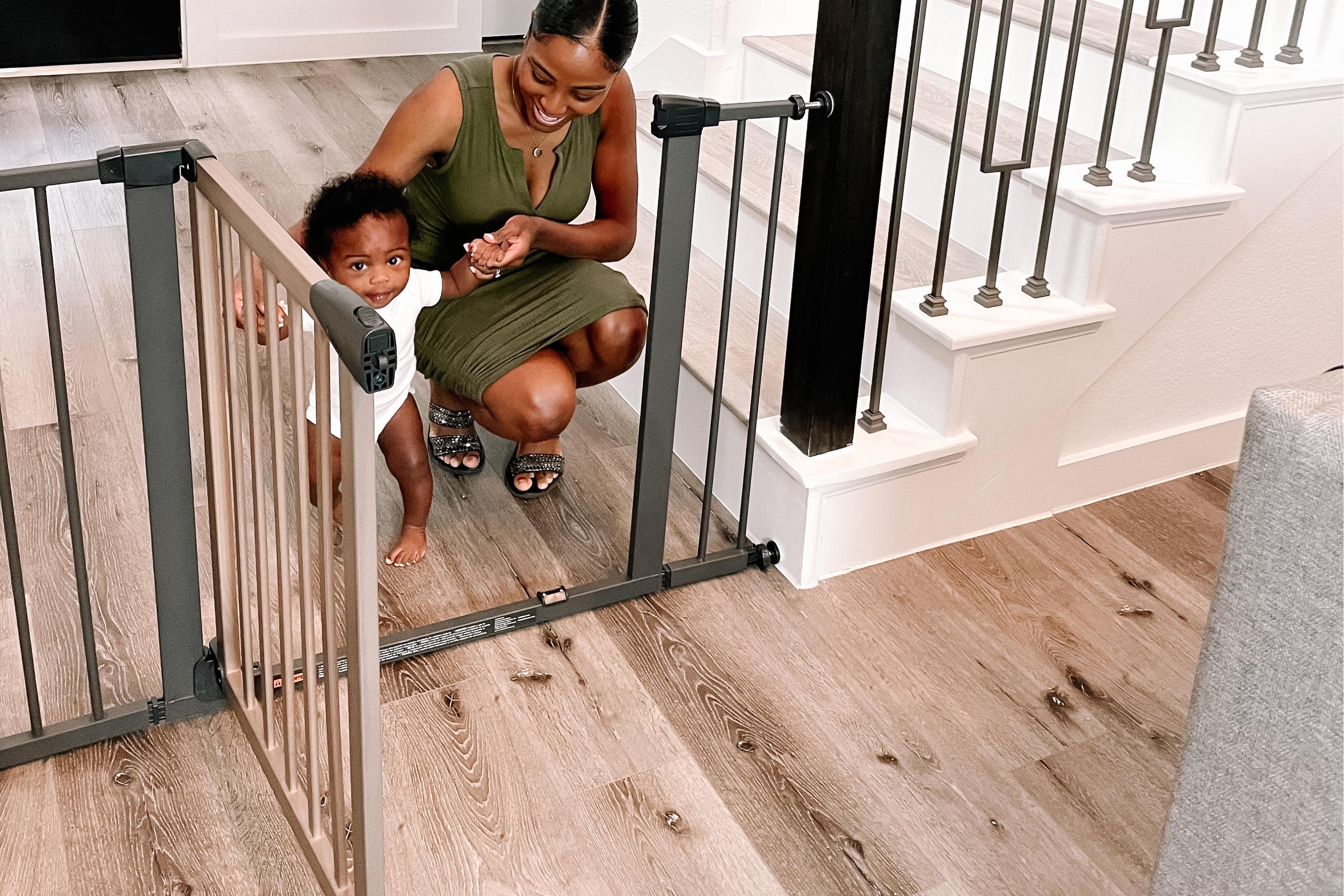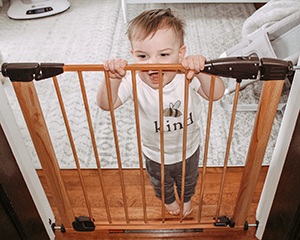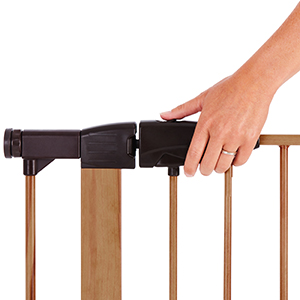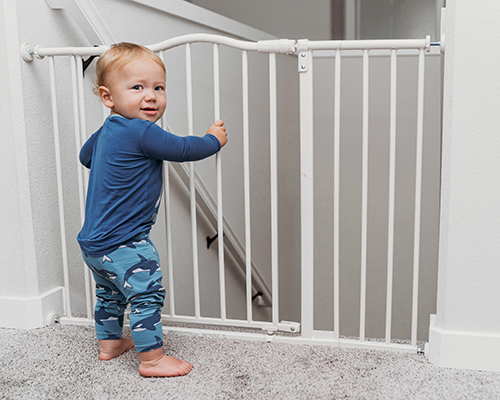Hazards of DIY Baby Gates
Jun 28th 2021
Have you ever thought about making your own baby gate? Handmade baby gates might look nice with your home’s décor, but they don’t live up to the strict safety standards of a baby gate that has been certified to be safe.

Once your baby starts to crawl and move about the house, keeping your baby safe while they explore is a top priority as a parent. Baby gates are the first line of defense for keeping babies and toddlers out of areas that aren’t completely baby-safe. According to Healthline.com, nearly 2,000 children are sent to emergency rooms each year from baby gate related injuries, which is why it’s important to make sure your baby gate is installed correctly and passes rigorous testing specifications. You may be tempted to make your own baby gate to match your home décor or save a few bucks, but DIY baby gates may pose safety risks to your child because they lack important safety features.
Certified for Safety
The safest baby gates are Juvenile Products Manufacturing Association (JPMA) certified, which tests child products to confirm that they adhere to the standards set by the American Society for Testing and Materials (ASTM). The products certified by these organizations are deemed safe to use, so be sure to look for the JPMA logo on any gate you purchase. Baby gates purchased by a JPMA-certified manufacturer have gone through extensive testing to ensure safety. You might find plans on the internet to make a Do-it-Yourself baby gate, but handmade gates have not gone through the same rigorous testing processes and could ultimately lead to an accident or injury. All Toddleroo by North States products are tested by independent test labs and are certified to meet or exceed all juvenile products standards and government regulations set by JPMA.
Potential Dangers of DIY
From openings between slats that are too wide to materials that could injure your child, there are many potential failures for a DIY baby gate. Firstly, Do-it-Yourself baby gates do not meet the child safety standards set by JPMA and ASTM, and they likely don’t include automatic locking and two-step opening features. Many of the DIY baby gate plans online only include a simple latch that can easily be maneuvered by a smart toddler. A proper baby gate fastener requires a two-step opening process where the user must depress the latch and lift up on the gate in order to open it. Second, many of the handmade baby gate plans found online include slats that are spaced too widely or that have a large gap at the bottom of the gate. Gaps in a gate larger than 3 inches wide could be a danger for head entrapment and could also give your little one enough space to climb the gate. Gates tested by JPMA are ensured to have a safe latch and slat spacing. Finally, most DIY baby gates online are made of scrap wood, which can cause a few problems. Wood purchased at a hardware store might not be smooth or splinter-free, and may also have sharp edges. Baby gates tested by JPMA are also required to withstand 30 pounds of force before dislodging, and handmade baby gates likely do not meet this standard.



Photo credit: Caitlin Gradl
Save Time and Money
Buying a baby gate at the store that is JPMA certified can be cost effective and can save you lots of time. Making your own baby gate at home might seem like a cheaper option, but it can be time consuming and requires lots of tools and materials. Buying all of the materials, creating a plan, and building the baby gate will take more time than buying and installing a store-bought baby gate. Purchasing and using a JPMA-certified baby gate only requires a few measurements, and potentially a few tools if you are hardware-mounting your gate. There are also many baby gates that are reasonably priced while also complementing your home’s décor. The extra few dollars you spend on a JPMA-certified gate will be worth the peace of mind you get knowing that your little one is safe!
Endless Home Décor Options
One benefit of a Do-it-Yourself baby gate is that it will look great with your home décor. However, JPMA-certified baby gates come in attractive designs that will match any home décor, and you will hardly notice that they are there. Baby gates come in a variety of materials such as metal, wood, and plastic. Hardware-mounted gates are the strongest and should be your top choice for spots you need extra protection like the top of the stairs. JPMA-certified gates from a store are also more versatile than DIY gates because most of them can be used in a variety of openings, include extensions, and can come along with you if you ever decide to move.
In addition to looking for the JPMA logo on gates you purchase, make sure to measure your space ahead of time and think about creating ‘safe zones’ in your home. Gates used at the top of stairs must be hardware-mounted to provide extra stability and security. This type of gate is ideal for helping to prevent a child from tumbling down the stairs. You can use pressure-mounted gates at the bottom of stairs and between rooms. No construction or complicated math is needed for either hardware or pressure mounted gates. You can find more information about choosing the best gate for your family at our Gate Basics page.
Safety is our number one priority here at North States, and although a DIY baby gate might sound like a great idea, it can also come with some drawbacks. We recommend shopping for your family’s gates at a store or online, and make sure to look out for the JPMA logo on any baby products you decide to purchase.

